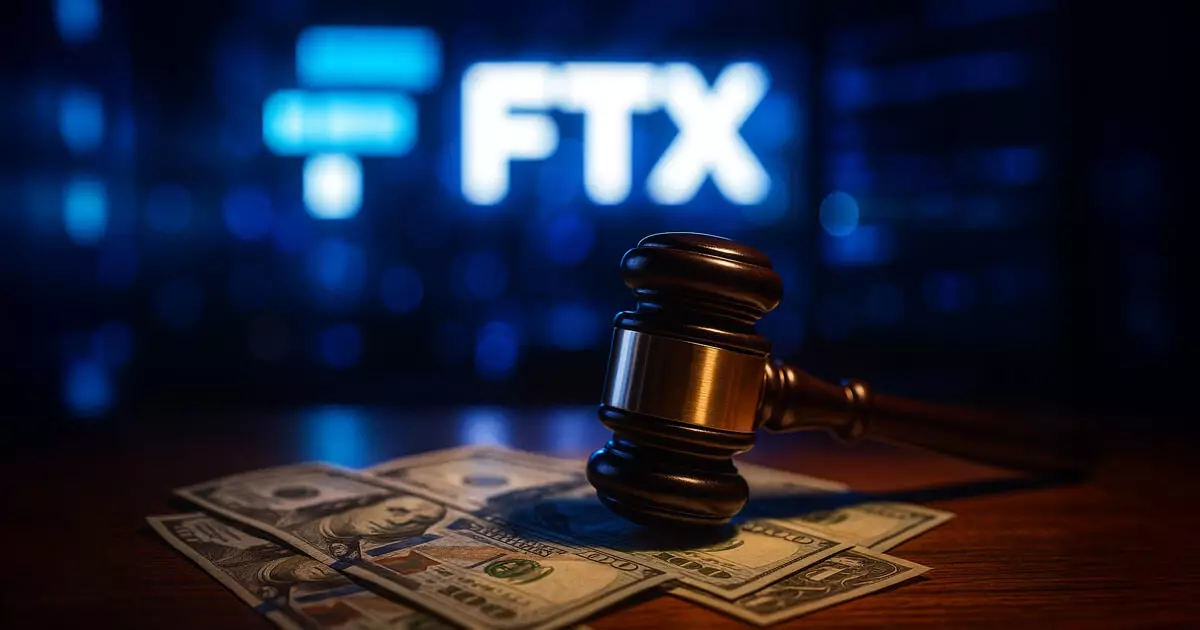In a tumultuous landscape where digital currency exchanges and hedge funds collide, the recent bankruptcy proceedings involving FTX and Three Arrows Capital (3AC) serve as a cautionary tale for investors and stakeholders alike. Set against the backdrop of a failing crypto marketplace, the unfolding legal battle over a staggering $1.53 billion claim by 3AC could very well depict the growing instability in the world of cryptocurrency. FTX’s lawyers have responded vehemently to this claim, pitying it as “illogical” and as something that threatens to siphon much-needed resources from the exchange’s legitimate creditors. This scenario raises serious questions about accountability, risk management, and the long-lasting ramifications of reckless trading.
Self-Inflicted Wounds: A Lesson in Risk Management
At the heart of this dispute lies the crux of 3AC’s alleged financial woes—self-inflicted damage stemming from poor risk management rather than external misfortunes attributed to FTX. FTX’s legal team argues that the hedge fund dug its own grave through excessive borrowing and a lack of responsiveness to margin calls during a particularly volatile period in 2022. It is essential to note the influx of capital 3AC sought, including a $120 million credit line from FTX, which they exploited to fuel their ambitions in a market characterized by unprecedented volatility.
When the TerraUSD stablecoin devaluation led to a market collapse, 3AC found itself cornered, breaching margin requirements. The outcome was nothing short of disastrous; despite being warned of the impending financial disaster, the hedge fund’s delayed response turned what could have been a smoothly mitigated situation into a crisis. FTX’s decision to liquidate the struggling firm’s account, a measure described as precautionary, was not merely a contractual right but an imperative meant to safeguard the financial health of the exchange and its remaining creditors.
FTX’s Legal Arguments: A Robust Defense
However, FTX’s lawyers are taking a proactive stance. They argue that 3AC’s inflated claim is built upon an “unreasonable and unsupportable” foundation, with an extraordinary assertion that a mere failure to respond equates to a breach of duty on FTX’s part. This line of reasoning attempts to shift blame, implicating FTX as part of the larger financial malaise that befell 3AC. Notably, testimony from regulatory and advisory experts supports FTX’s position, illustrating that the forced liquidation was both justified and critical for averting more severe losses.
The legal backing includes insights from Steven P. Coverick, a managing director at Alvarez & Marsal, and expert opinions from King’s Counsel Stephen Atherton, who both dismantled 3AC’s assertions effectively. This level of expert analysis contributes significantly to FTX’s argument that 3AC’s mismanagement is what necessitated such drastic measures.
A Legal Tug-of-War: The Stakes of Accountability
In this court drama, the stakes couldn’t be higher. FTX stands firm in its assertion that allowing 3AC to extract any value from their remaining assets would unjustly impact the legitimate creditors who await reimbursement following the fall of the exchange. As the legal tussle evolves, one cannot ignore the pressing need to hold companies accountable for their decisions. The crypto industry, rife with speculation and risk, needs accountability mechanisms to prevent actions that could lead to consequential losses.
Moreover, the timing of this conflict raises insightful concerns. With a courtroom hearing set for August and a critical response deadline looming for 3AC, the futures of both firms hang precariously in the balance. The unfolding drama serves as a profound reminder that, even in a digitized financial arena, it is often poor decision-making that carries the most weight, ultimately leading to the downfall of empires built on fragile investments.
What Lies Ahead: The Risks of Volatility
As FTX and 3AC prepare for their next chapters, the ramifications of their partnership—or lack thereof—will likely resonate throughout the crypto landscape. Investors must wonder whether lessons will be learned from this chaos and how it will shape future regulations within the volatile crypto market. As these entities squabble over claims and counterclaims, the critical point remains: reckless investments can lead to disastrous consequences that ripple far beyond the immediate parties involved. In an era marked by the sometimes anarchic nature of digital currency, it is essential that vigilance and prudence take center stage to stabilize this burgeoning yet unpredictable market.

